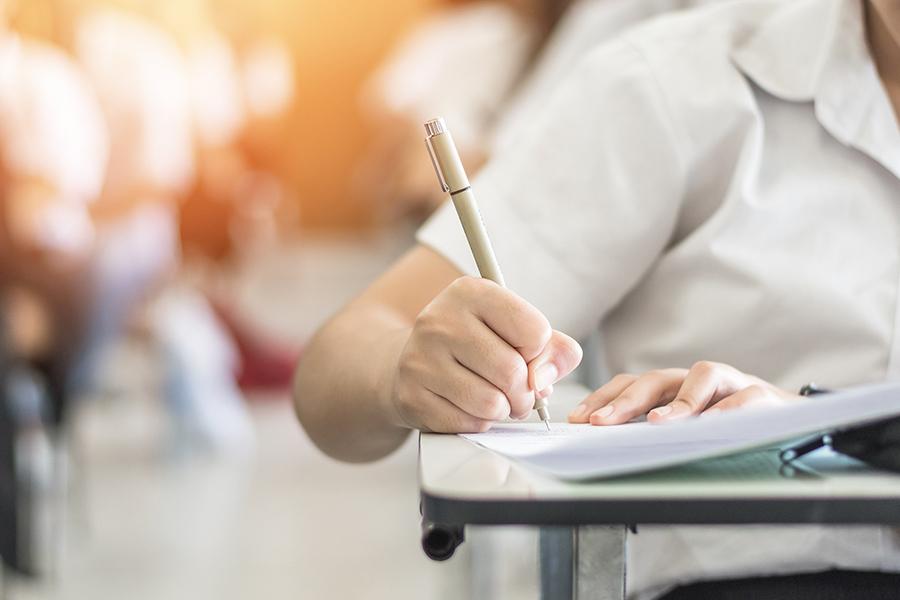Skilling for the digital age: Moving beyond literacy
For a digital future, the private sector's involvement to help skill India's population in languages familiar to them, will be crucial. While much has been achieved, much more remains to be done
Currently, the UN estimates that 617 million youth worldwide lack minimum proficiency in reading and mathematics, 57 million primary age children are out of school and 750 million adults are illiterate. Ensuring that all youth and a substantial proportion of adults achieve literacy and numeracy by 2030, is a critical outcome of achieving Sustainable Development (SDG) Goal 4, and will require concerted efforts. The involvement of the private sector from a resources and loaning of skills perspective will be crucial.
Globally, Adult Literacy Programmes (ALPs) have been recognised for their ability to increase civic participation among programme participants. The use of mobile phones in ALP interventions in Nigeria for instance, is reported to have led to substantial impacts on writing and numeracy among the mobile phone recipients. This ability of literacy, increasingly via digital means, to empower individuals makes it an imperative development goal for vulnerable individuals and communities of all ages.
Reducing gender gaps in literacy
Achieving SDG 4 is particularly important as access to quality education and literacy can have a cascading effect on each of the SDGs. In India, the Annual Status of Education Report (ASER) 2018 states that for the first time, the proportion of children not enrolled in school has fallen below three percent. The trends have been encouraging. As per the Census 2011, between 2001-2011, there has been a 10 percent increase in the total population of literates. Bihar, Jharkhand and Uttar Pradesh have shown a rise of over 50 percent in the total number of literates, while the gender gap in national literacy between 1991-2011 has decreased by nearly five percent. It is also significant that the proportion of girls between 11-14 years that are not enrolled in school has fallen to 4.1 percent from 10.3 percent in 2006. These outcomes are extremely positive and a matter of pride. However, much remains to be done.
Reducing the gender gap in literacy in India is being addressed through flagship national programmes such as the Beti Bachao, Beti Padhao Yojana. Attention has been given to female literacy in development planning and assistance, aspirational districts for instance are ranked on a composite index that gives weightage to female literacy for a core indicator: Education. Recently, in Goalpara, an aspirational district in Assam, household surveys were conducted and 6,895 beneficiaries were identified for Adult Literacy Training through an intensive programme, to achieve 100 percent female literacy. Although in a country as vast and diverse as India, one rigid model may not have applicability, but learnings are available from regions where some programmes have seen great success.
Literacy through indigenous languages
This year’s theme for International Literacy Day was ‘Literacy and Multilingualism’, embracing linguistic diversity. Multilingualism in education has been promoted in India since 1968, through the three-language formula for encouraging English, Hindi and a regional language. Advances in technology have made possible noteworthy national efforts, such as the multilingual e-platform Gyanpedia, currently operational in seven states, and the Government of Kerala’s effort to make digital content available in tribal languages.
In Madhya Pradesh, an intervention by a local NGO is training traveling library coordinators to carry children’s books to remote villages to engage tribal children with storytelling and folk songs, to encourage community mobilisation amongst Particularly Vulnerable Tribal Groups (PVTG) to improve school attendance.
In a digital present and future
Reducing the digital divide through upskilling is likely to benefit learners across age groups. In Europe, the Self-reflection on Effective Learning by Fostering the use of Innovative Educational Technologies (SELFIE) tool is helping schools embed digital technologies into teaching, learning and student assessments. The tool is available in all 24 official European languages, maintains data privacy and can be customised by schools. Similarly, the Platform for Certification of Digital Competencies (PIX) by the French Ministry of Education, provides an online platform to assess the training needs for digital transformation. PIX also provides a digital curriculum to improve digital literacy and competence. Both innovations provide free assessments of digital skills and can be valuable models for developing countries.
While the fundamental responsibility for successfully implementing Agenda 2030 lies with governments, the role of the private sector and civil society stakeholders, as well as partnerships, are instrumental in achieving SDG4 and the global commitment to literacy. We have learnt that rebuilding schools in disaster and conflict-hit areas through community participation, building female-friendly toilets as well as providing safe drinking water can have direct impact on school enrollment, safety and learning outcomes.
Making literacy accessible to those who are displaced, disabled and at risk, in languages suitable and familiar to them, will support social and intercultural communication. It will ensure social, physical and economic well-being of communities across the world, ensuring that no one is left behind. Whilst great strides have been made in India and globally, much remains to be done.
The writer is Vice Chairman of PwC India Foundation.
The thoughts and opinions shared here are of the author.
Check out our end of season subscription discounts with a Moneycontrol pro subscription absolutely free. Use code EOSO2021. Click here for details.
-
 ssc notes
ssc notesthank you for this article.
on Nov 2, 2019 -
 Pankaj
PankajAgree much more needs to be done ! Miles to go......
on Oct 30, 2019
